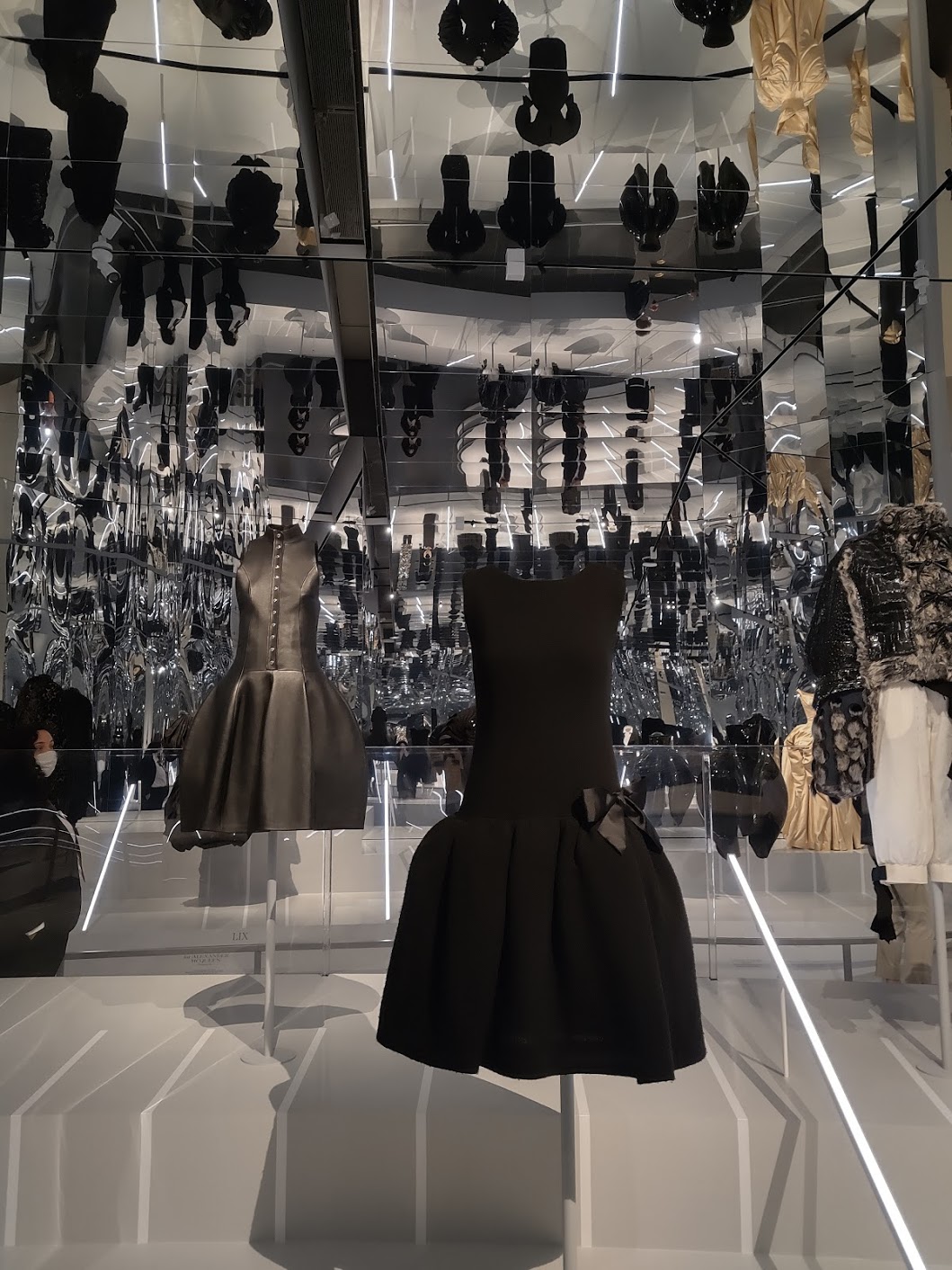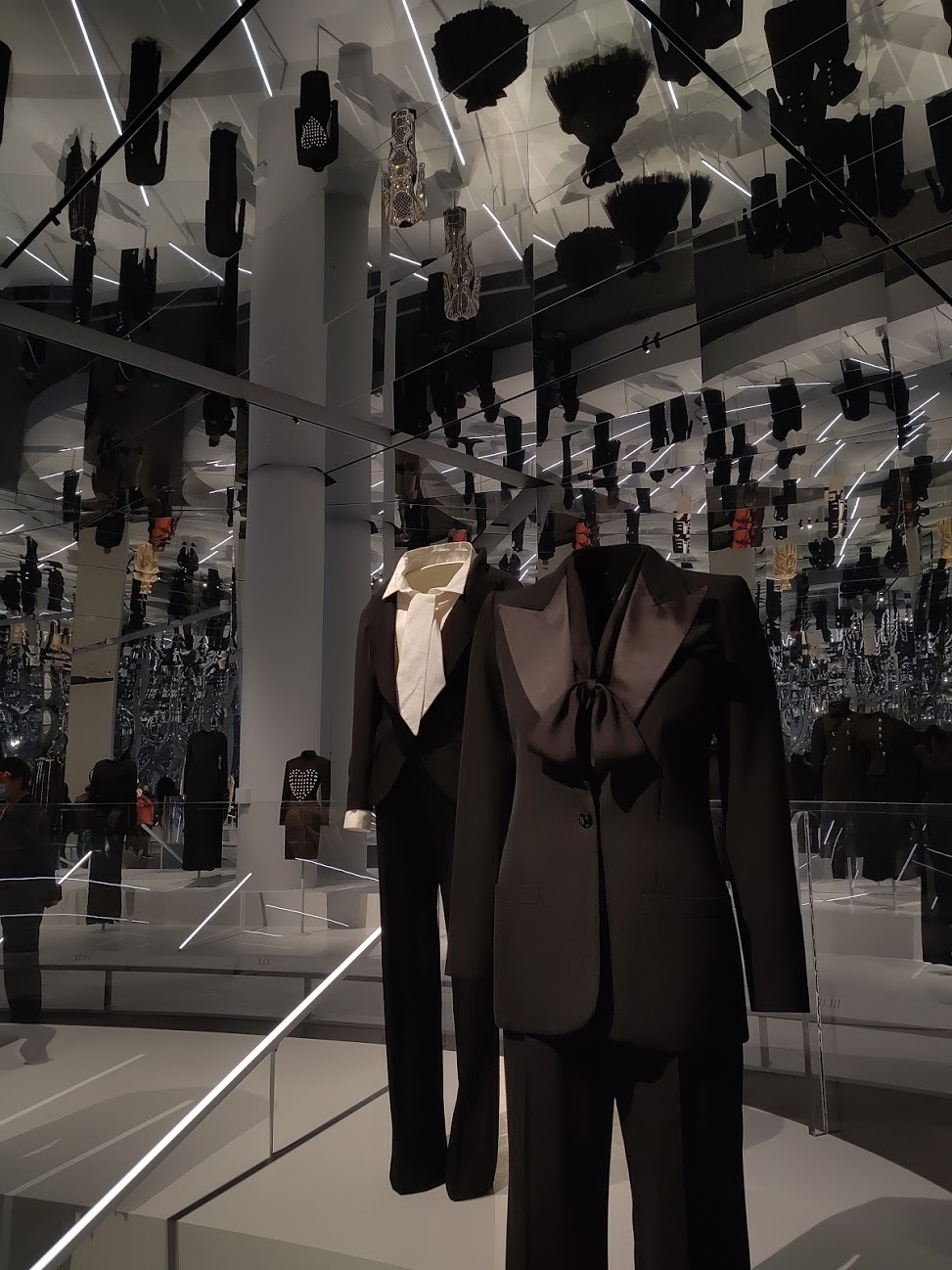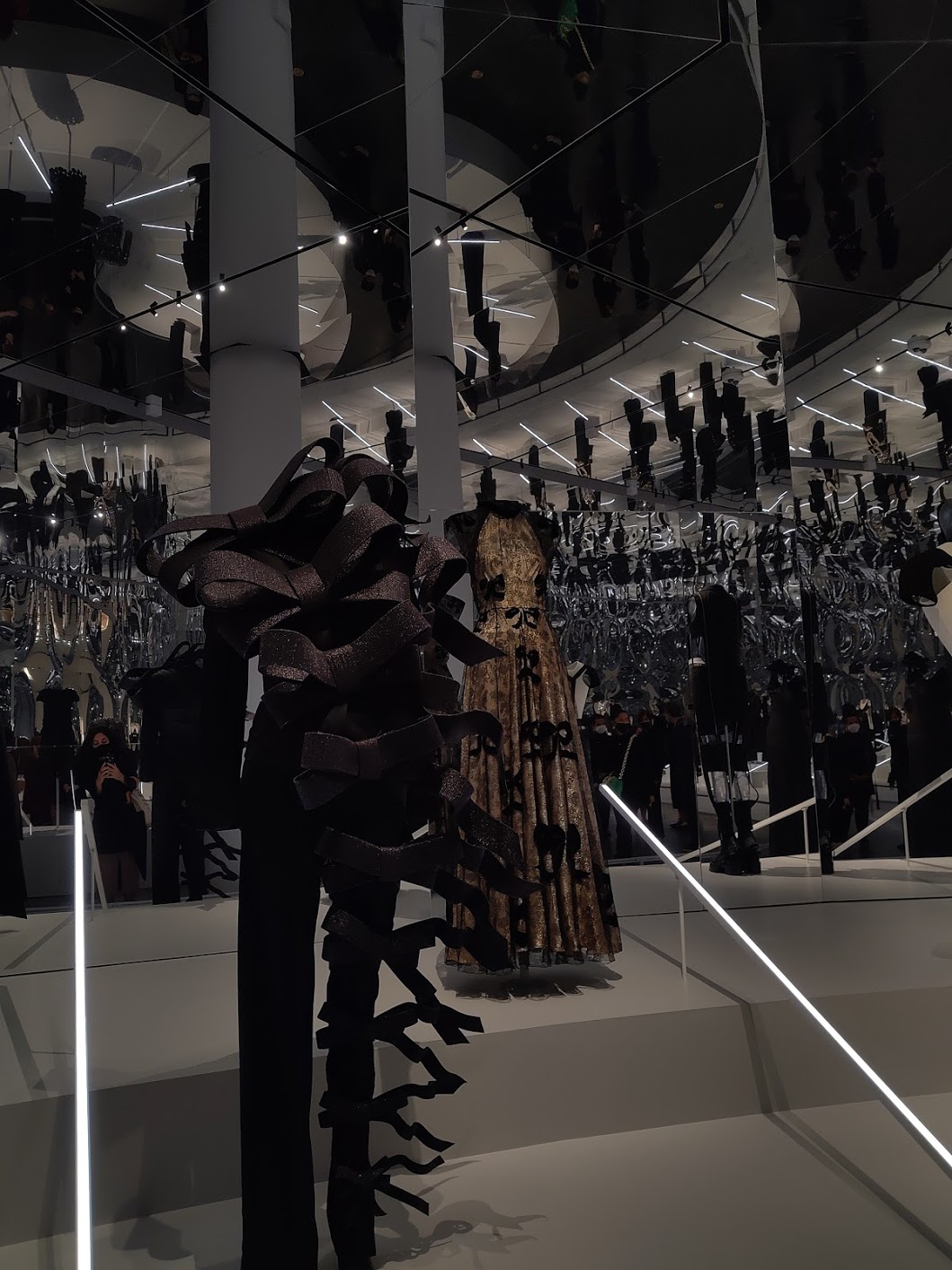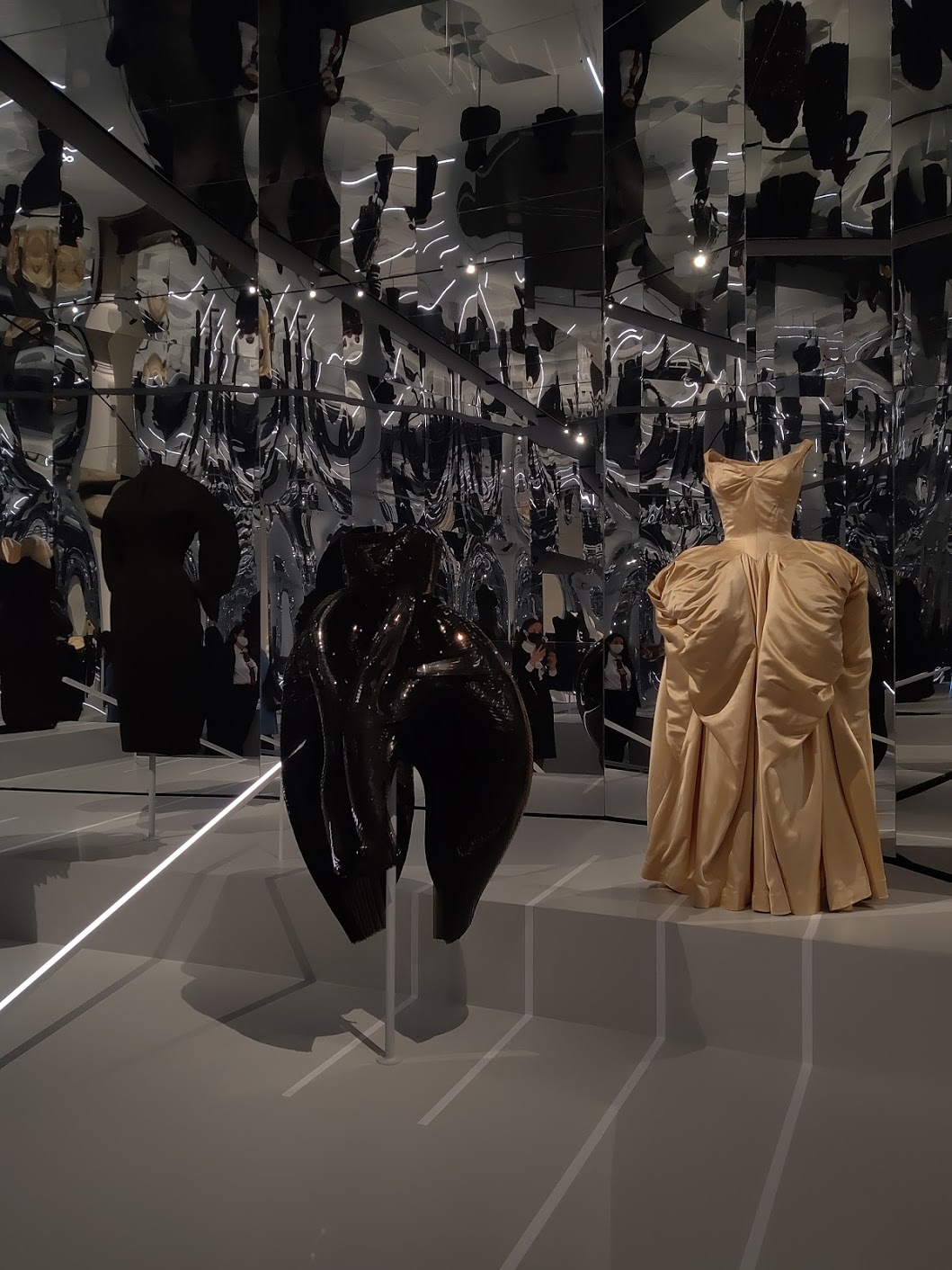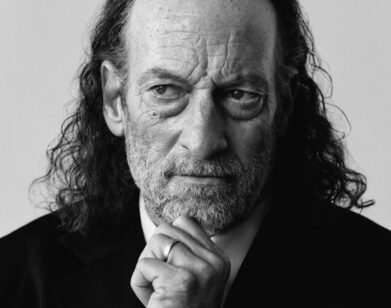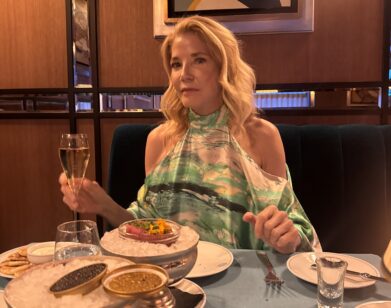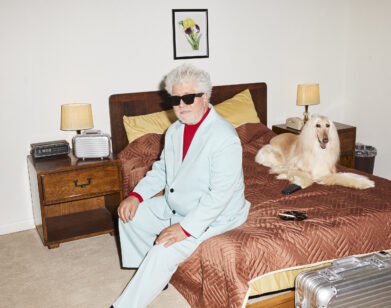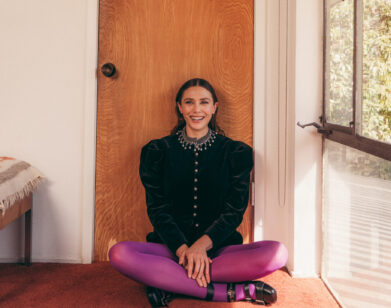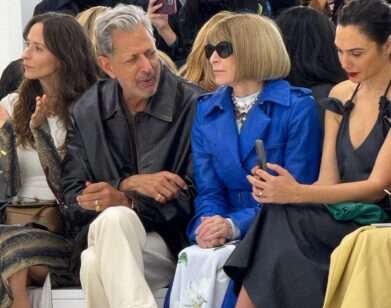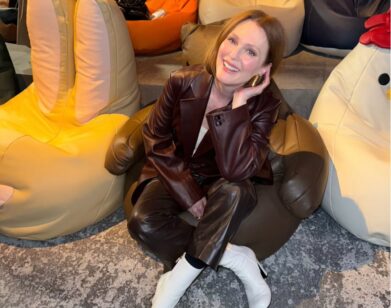we went there
Transcending Transience: This Year’s Met Costume Institute Exhibit Is Both of Its Time and Entirely Outside It
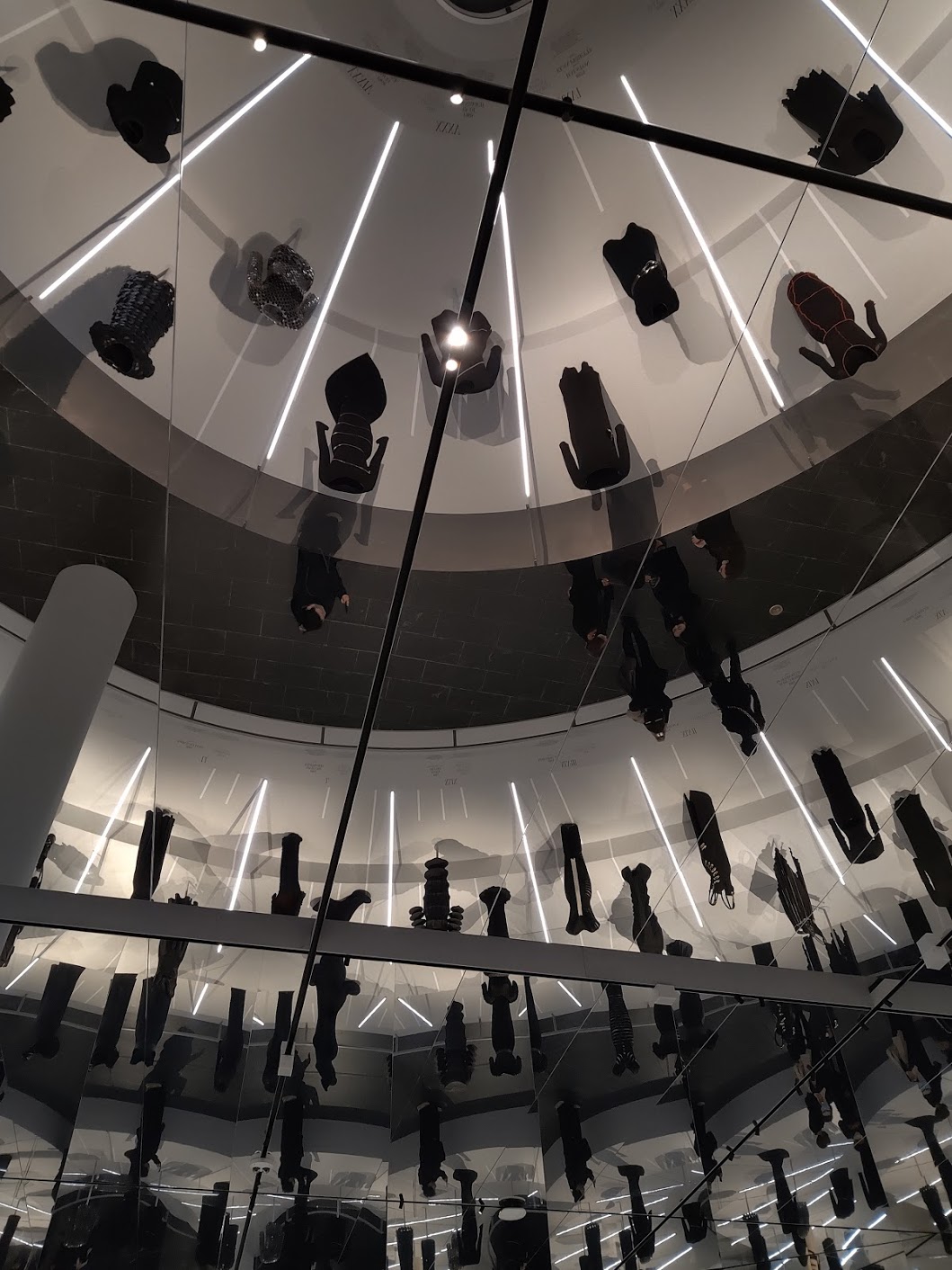
The ceiling at About Time: Fashion and Duration. Photos by Sarah Nechamkin.
Mirror, mirror on the ceiling: who’s the fairest outside New Zealand? Certainly not the United States, which is currently, in its second wave, experiencing a surge of Coronavirus cases as temperatures drop and socially starved citizens grow weary. Nevertheless, in this current age of sweatpants, the new Costume Institute exhibit at the Metropolitan Museum of Art—the fabled site of many a Met Gala past, of long trains and longer lines—makes a case that we’re still contenders for the most fashion-conscious. While past Costume Institute themes have explored specific cultures, designers, and intellectual movements, this year’s is befuddlingly a concept—and a very broad one, at that. About Time: Fashion and Duration, which marks the museum’s 150th anniversary, explores Father Time in its most literal sense (a giant swinging weight swerving back and forth at the center of the room; the anxiety-inducing tick-tock of a clock lingering through the speakers), as well as its abstraction. As one gallery flows to the next—linked by funhouse mirrors and the soothing voices of Nicole Kidman, Julianne Moore, and Meryl Streep reading Virginia Woolf excerpts on the fraught nature of temporality—the visitor is guided through 60 pairings of mostly black designs, each representing one “minute” in the ever-repetitive hour that is fashion history.
Where there is a silk princess-line dress from the 1870s, there is an Alexander McQueen “Bumster” skirt from 1995. Where there is a hip-maximizing Charles James ball gown from 1951, there’s a shapely couture PVC Iris Van Herpen dress from 2012. Where there’s a silhouette there’s a similar, slimmer one; a suit and its spawn. As the spiral of getups swirl on, the temporal distance between each pairing collapses, jumping eras as the cyclical industry is wont to do. It would be a lazy take on “everything old is new again,” the sartorialist’s mantra, if it weren’t so prescient. While the roman numerals that line the exhibition border on kitsch—something last year’s could’ve used a dollop of—the stark, backlit beauty of this Hall of Mirrors is hauntingly fitting for a year that saw the erosion of institutions, artifice, and yes, time.
The Costume Institute is most culturally aligned with its notorious gala, the coveted invite for every celebrity worth their salt that’s often dubbed the “the Oscars of the East Coast.” As I wandered the exhibit’s dimly lit halls during the week leading up to the most nail-biting election in modern history—in my first real public outing of recent memory—I couldn’t resist fantasizing about an alternate timeline in which this year’s Gala didn’t dissipate amidst 2020’s flames. I imagined what kind of misguided couture grandfather clocks the Kardashian Klan would’ve rolled up to 5th Avenue wearing, or whether Tilda Swinton would reprise her role in Orlando in what the media would surely pan as the Most Boring Met Gala of All Time. But I had to squint to remember the days in which those things really mattered. The point is, after all, that with every swing of the pendulum, a hemline gets shorter, a new president gets elected, and a generation is born that will teach its elders by drawing from their mistakes.
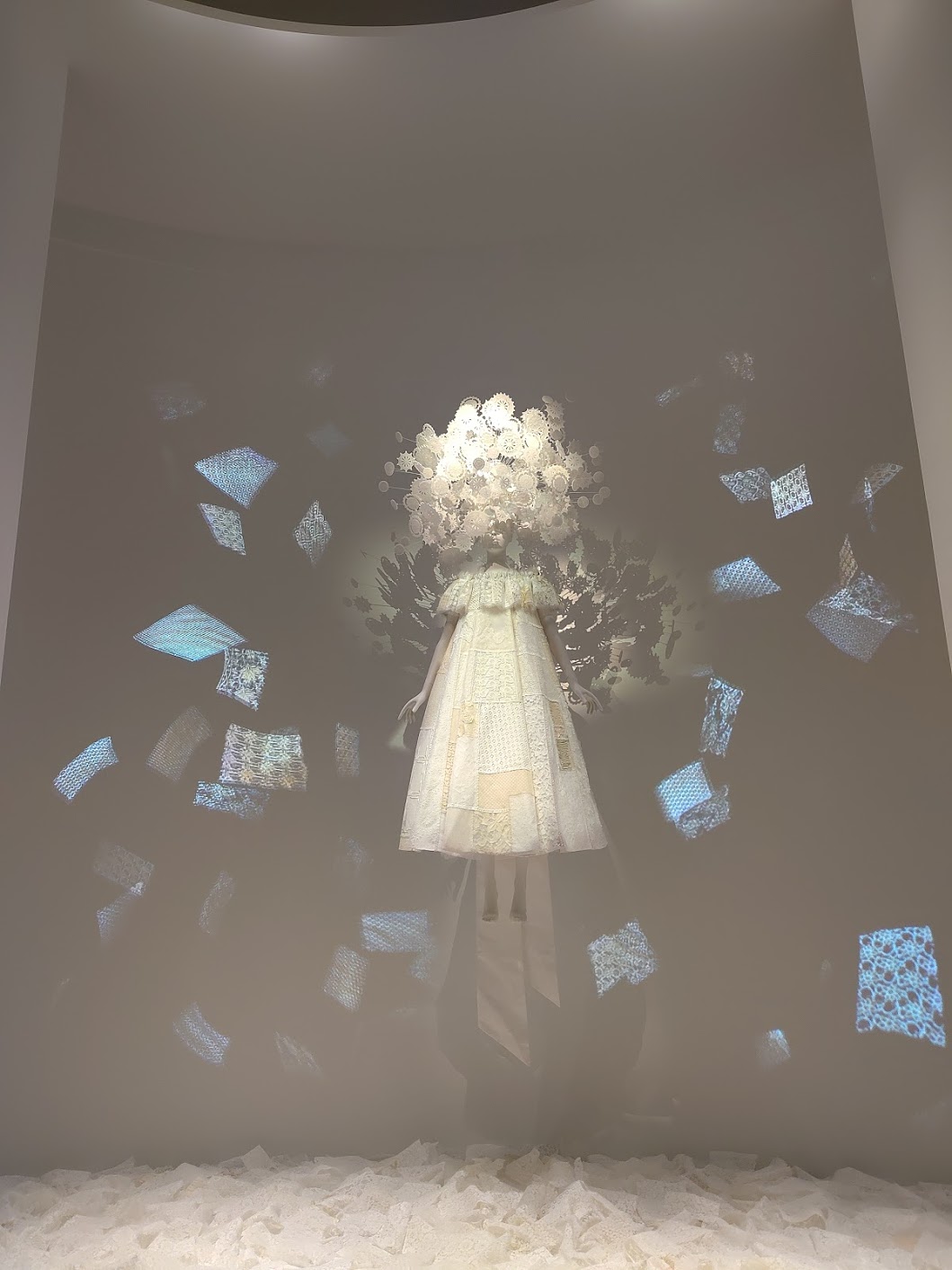
The exhibit concludes with a reflective note: a Viktor & Rolf patchwork dress that seems to float in space and time. Drawn from the designers’ archive of design swatches, the dress is representative of a pivot toward sustainability in fashion, and the hopeful anticipation of a future in which time can slow its roll. (It also concluded with a Louis Vuitton-branded mask for press.) While About Time seems frozen in its subject, a capsule into a previous era of museum-going and large crowds, its approach to past, present, and future is eerily on the nose. The somber, introspective tone is on par with the mood of 2020’s final hour—a reminder that as we march forward, the past, with all its invention and error, is always inching behind us.

